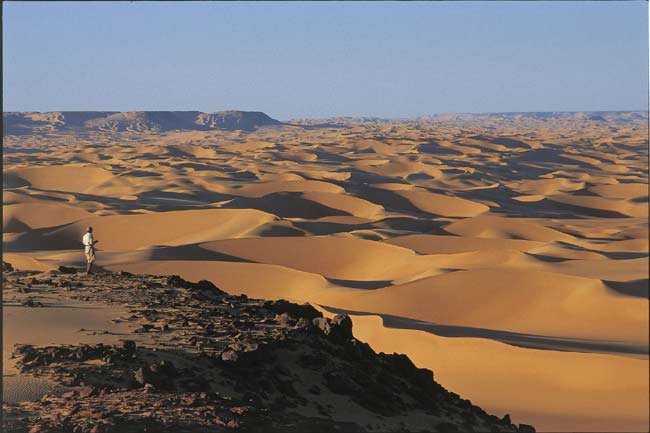Nigeria, Africa’s largest Sub-Saharan nation is experiencing the consequences of its population growth, its need for more agricultural production, its cultural and tribal history, and the relentless changes to its environment brought on by fossil fuel production and climate change. In this blog our focus is not on oil, but on Nigeria’s battle to deal with changes happening in its northern regions.
The State of Nigeria Today
Nigeria is home to the fastest growing mega city – Lagos. It is home to multinational oil companies. It is home to tropical rain forests, grasslands and deserts. And it is the desert which is creating a crisis. That crisis is increased desertification.
Nigeria’s Plateau State is experiencing tribal and ethnic conflict largely resulting from the pressures of the advancing desert. Arable farmland and water are at a premium. Mass migration is the end result. Because if you cannot grow or raise the food you need in this part of the country then you move elsewhere or starve. And what is happening in Plateau State in Nigeria is symptomatic of similar crises occurring in other Sub-Saharan states including Senegal, Guinea, Mali, Niger and Cameroon to name just some.
In a scientific study completed in 2009, researchers concluded that climate change could devastate Africa leading to massive food shortages. Their research showed that Africa was warming faster than other parts of the globe and getting drier. It predicted an increase in average temperatures for the continent of 4 degrees Celsius (7 Fahrenheit) over the next century. Their climate models showed that parts of Africa would see increased rainfall but for the areas of Sub-Saharan West Africa, prolonged drought would be the forecast. Prolonged drought would lead to increased desertification.
The Growth of the Sahara Desert
Many scientists argue that the Sahara Desert is the first evidence of human-induced climate change. They point to the fact that there is evidence of human settlements in the Sahara 10,500 years ago when the Sahara was savanna-like and far more habitable than today. Archaeological digs have found bones from elephants, rhinos, hippos, crocodiles and 30 species of fish, all thriving in what is today desert.
Did human domestication of animals and herding strip the Sahara of the grasslands that were its dominant feature at the time? Or did seasonal rain patterns change causing prolonged droughts ending human settlements and the historical biodiversity? It’s a chicken and egg scenario but nevertheless desertification was the end result.

Today, many scientists see that same pattern emerging in the Sahel south of the Sahara. Persistent drought, improper land use, increasing human and domestic animal population, over grazing, chopping down of trees for firewood, and depleting aquifers are putting undue stress on an environment already experiencing episodes of drought.
The Consequences of Changes in the Sahara
Desertification is increasing human competition. Increased human competition is leading to mass migration, civil unrest and wars. The mass migration is leading to urban growth. At its current immigration growth rate of 8% per year, Lagos, Africa’s largest city, will exceed 25 million in population by 2015 to become the 3rd most populous urban centre in the World. Many of its newcomers will be climate refugees from the north.
Herding, once the most common activity in Plateau State is moving southward as the desert advances. That relentless push is impacting Nigeria’s subsistence farmers and their land usage leading to tensions between growers and herders. Migration from growing desert area and population growth are impacting food supply to a level where Nigeria, once self reliant in meeting the food needs of its population, today spends $150 billion a year to import what it no longer grows domestically.
The Nigerian experience is one of many. All of the Sub-Saharan nations are feeling the desert’s march southward. In Mali a civil war has as much to do with tribal and religious conflict as it has to do with scarce resources. Burkina Faso has seen similar unrest. Violence within nations has led to political refugees spilling over into neighbouring states like Ghana and Cote d’Ivoire.
Is Sub-Saharan Africa in All Our Futures?
Whether human activity or natural, climate change has come to Sub-Saharan Africa. Almost 40% of the continent today is feeling the Sahara effect. Much of the problems we have described directly relate to poor governance whether resulting from leaders burying their heads in the sand (pardon the expression but it seems appropriate when talking about deserts) or from sheer incompetence. Leadership, good policy, delivering solutions – all are possible. Other countries are managing to deal with deserts. So can Africa.
But the problems Sub-Saharan African nations and their citizens face are symptoms of a global illness we may all soon experience if we continue to ignore the impact our technological society is having on the Earth’s atmosphere and oceans. Most of us on the planet are spectators watching the debacle. Will we remain spectators when it becomes our turn?















